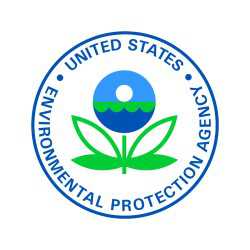EPA Phase II Fumigant Labels Now In Force

New requirements for important crop fumigants were rolled out in December. These Phase II EPA registrant labels apply to chloropicrin, 1,3-dichloropropene formulations containing chloropicrin, dazomet, metam sodium/potassium, and methyl bromide.
The fumigant label updates are not new to growers, as Phase I labels and the new rules of compliance were established Dec. 31, 2011. The first wave of regulations included the requirement for growers to develop written fumigant management plans, formally adopt good agricultural practices, new worker protection standards, and other safety related actions.
Train Up To Certify
One of the more significant changes with Phase II labeling will be the requirement for certified applicators to successfully complete training specific to soil fumigation for many if not all of the fumigants that they apply. Registrants of soil fumigant products offer EPA-approved online training as well as in-person training with exams.
While there was some initial confusion over whether or not UF/IFAS would be involved in helping growers train, at presstime, it appeared EPA was reconsidering. “EPA has reviewed our revised training modules, and we will begin incorporating their comments from the review so that we can submit the newly revised modules back to EPA for yet another critical review,” says Joe Noling, a nematologist for UF/IFAS. “We are encouraged that at some point EPA will allow UF use of these modules for both Internet-based core training and for in-person core training. With our approach, registrants will still be collaboratively involved and responsible for delivering each of the different active ingredient training modules.”
Noling says the big take-home message regarding the new training is EPA has developed a comprehensive educational challenge to overcome for the fumigant using community. “In-person training is an eight- to 10-hour proposition to present the material and to conduct the four different core exams, and then an exam for the specific active ingredient module, all of which must be sequentially passed to receive certification for applicator training for that product,” he says. “EPA also has approved a State of Florida FDACS exam, which can only be taken by applicators if they have failed any or all of the registrant training modules at an in-person training event. They must take all of the module exams (core + active ingredient) before a FDACS-authorized agent can administer the exam. The training effectively requires a pretty thorough understanding of a 40- to 50-page product label booklet to pass all of the exams.”
Banging Out Buffers
New fumigant rules expand upon buffer zone requirements. EPA notes the rules are intended to protect agricultural workers and bystanders — people who live, work, or otherwise spend time near fields that are fumigated. EPA has selected buffer distances that will protect bystanders from acute exposures, but not so great as to eliminate the benefits of soil fumigation. However, growers in more urban settings may be impacted by these new zones.
The size of buffer zones is based on the following factors: application rate, field size, application equipment and methods, and credits gained through the use emission reduction measures such as high-barrier tarps and conditions. Applicators should refer to tables in individual fumigant labels for specific distances. The smallest distance for buffer zones is 25 feet, while the largest distance is ¼ mile when schools, day cares, or other difficult-to-evacuate sites are located next to fumigant-treated fields.
There are many factors that must be considered to calculate and implement the new buffer zone requirement, many of which will require close study and training by applicators before applicator certification can be achieved. Therefore, applicators should not equate this process with obtaining CEUs for their Florida restricted pesticide applicators license and be prepared for and involved in what will be a lengthy and timely process.
“Applicators should come prepared,” says Noling. “Those who carefully read and digest the fumigant product labels for which they will apply should be able to do much better in the examination process than those that don’t.”
Mountain Of Modules
The new fumigant training comes in nine modules and can be completed at FumigantTraining.com. Each module takes approximately one hour to complete; so all applicators are encouraged not to wait until the last minute to train. The following are the different core and active ingredient modules required for training and use of the different products.
I. General Soil Fumigant Requirements (All fumigant applicators must complete the introduction and modules 1-4)
Introduction: Soil fumigant training (must be taken first)
Module 1: Soil fumigants and how they work, hazards, first aid and safety, understanding the role of the applicator and handler
Module 2: How to protect handlers and bystanders; emergency response plans and emergency preparedness and response measures
Module 3: The fumigation management plan; how to recognize unfavorable application conditions
Module 4: Buffer zones and how to determine buffer zone distances; application rates and how to determine broadcast equivalent rates
II. Active Ingredient Soil Fumigant Requirements (Complete module(s) relevant to your specific use)
Module 5: 1,3-Dichloropropene (1, 3-D) plus chloropicrin
Module 6: Chloropicrin
Module 7: Dazomet
Module 8: Metam sodium and metam potassium
Module 9: Methyl bromide with chloropicrin









